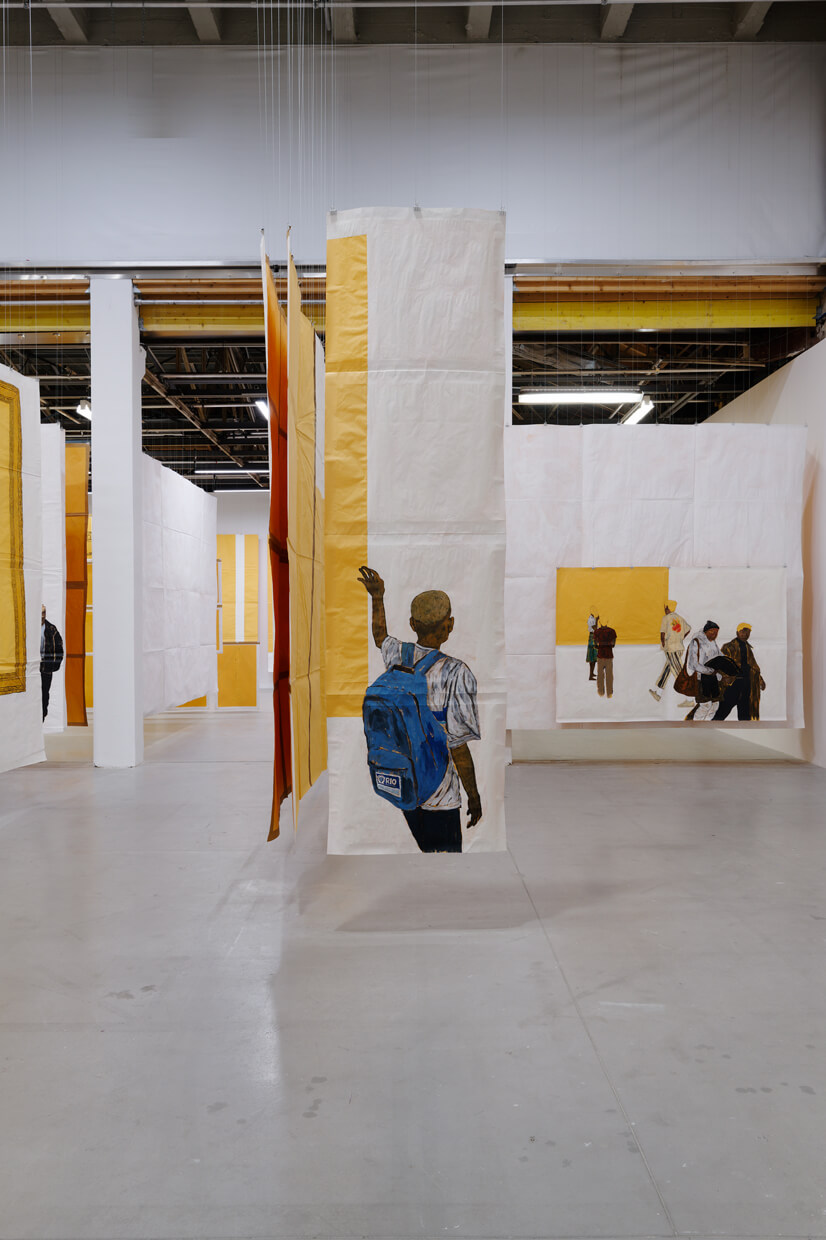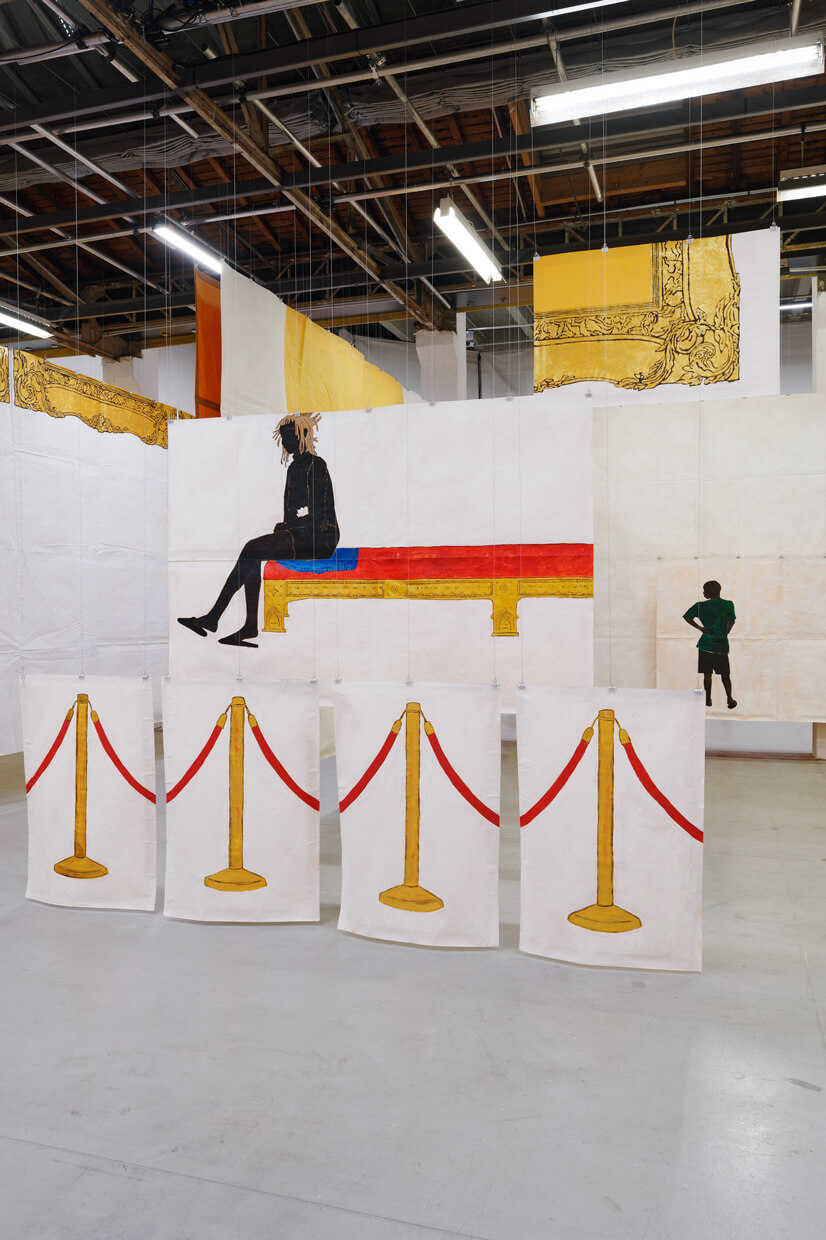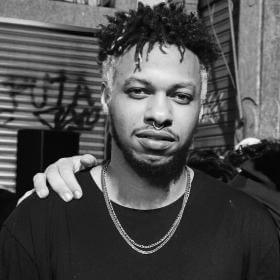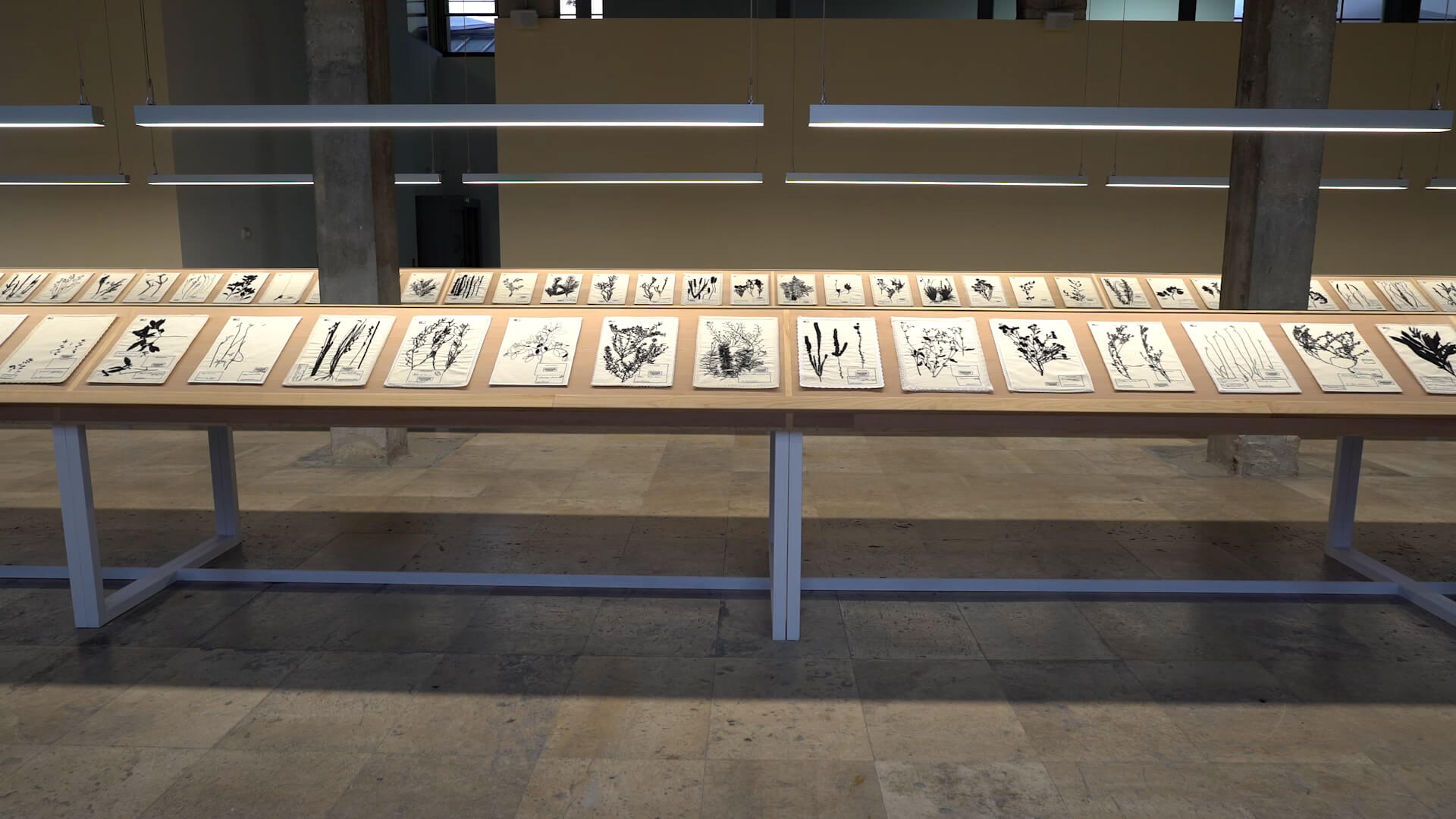SEARCH THE ENTIRE SITE
Video of the exhibition “New Power” by Maxwell Alexandre
Maxwell Alexandre
New PowerAt the Palais de Tokyo, Maxwell Alexandre paints black bodies in white cubes. Bodies of children, guardians and adults occupy the artist’s paintings. They turn their backs to us while turning their eyes away from a Eurocentric history of art.
Born in a catholic family in Rocinha, one of the largest favelas in Rio de Janeiro, Maxwell Alexandre sees painting as a “prophetic practice.” Through his immense political compositions, the legacy of European classical painting meets one of muralism and art from the streets– both references that he remixes to the irregular rhythms of hip hop which resonate with present day Brazil under tension.
In scenes of confrontation with the police, shining gold chains, baths of green backs, symbols related to football or church, Maxwell Alexandre reveals chaotic cartographies and targets the complexity of life in Rio de Janeiro. In landscapes with unfinished faces, bodies move, dance and collide. Scenes of everyday life (of the artist and of his community) are mixed with icons of pop culture (the black Power Ranger), symbols of advertising and logos of popular brands (Danone and its dairy products, Capri and its inflatable plastic swimming pools in the roof tops of favelas), and iconic personalities (rappers Biggie Smalls and Tupac before they wanted to kill each other; Jay-Z and Beyonce who shot a music video in the Louvre; or political personalities such as Marielle Franco, a black and lesbian elected official assassinated in 2019…).
Thus, Maxwell Alexandre paints Afro-Brazilians in their power, their emancipation against a backdrop of the American dream. He states, “Sometimes, you have to hit racism in the face, but I’m not brave enough to actually hit anyone, so instead, I paint.”
Following a residency between Rio and Paris on the occasion of Sam Art Project, the artist presents New Power, an exhibition that targets the world of contemporary art, its market, and its white cubes, and other “white spaces,” such as territories of power where racial and social strugger ossify.
“Pretos no topo (Blacks on top) has become a slogan of local rap. I first observed this phenomenon from a distance, then I wanted to show its implication in contemporary art and highlight that that’s where the winners are because that’s where the intellectual capital is concentrated. It’s not just about money, but about controlling the narrative and the image. Occupying and controlling theses spaces is the consequence of a powerful alliance. We (black people) must be attentive to these places designed so that we cannot see them. We must be physically present, attend openings, go to galleries and museums, learn about art, consume culture in all of its forms.”
From 26/11/2021 to 13/03/2022
Curator : Hugo Vitrani


























